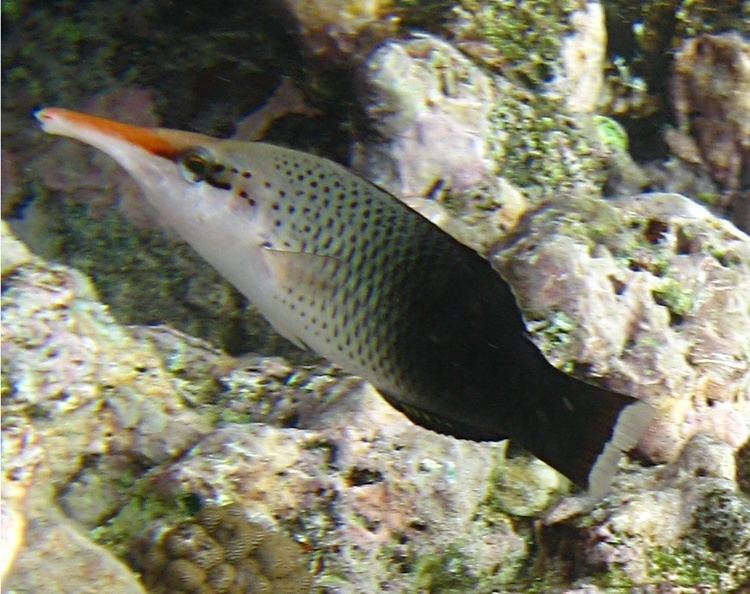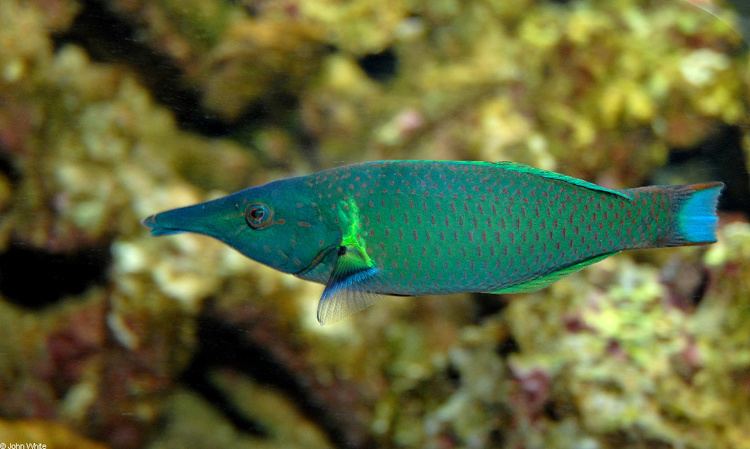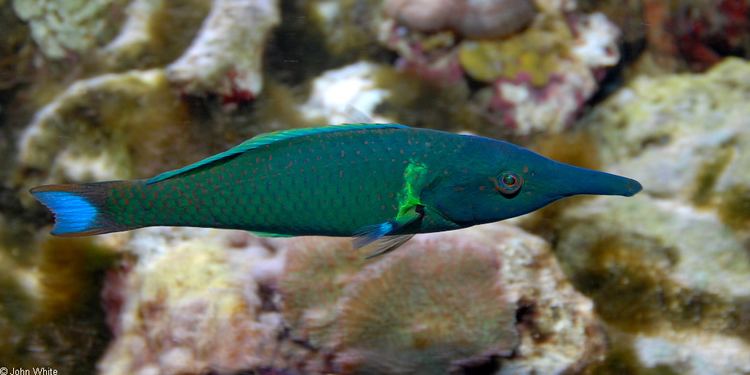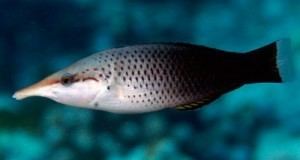Phylum Chordata Rank Species | Family Labridae Scientific name Gomphosus varius Higher classification Gomphosus Order Perciformes | |
 | ||
Similar Gomphosus, Gomphosus caeruleus, Moon wrasse, Pastel‑green wrasse, Thalassoma | ||
Bird wrasse care gomphosus varius
The bird wrasse, Gomphosus varius, is a species of the wrasse family.
Contents
- Bird wrasse care gomphosus varius
- Reef tank with green bird wrasse gomphosus varius
- Description
- Distribution habitat
- Biology
- References
Reef tank with green bird wrasse gomphosus varius
Description

The bird wrasse is a medium-sized fish, it can reach a standard length of 30 cm (12 in). Adults are relatively easy to recognize through their characteristic long nose and the way they are swimming jerkily flapping their pectoral fins. On the other side, juveniles are more difficult to identify just because they don't have yet their long nose. Gomphosus varius can be confused with its close relative Gomphosus caeruleus but differs from the latter by its color pattern and its geographic range. Like many wrasses, Gomphosus varius is a sequential hermaphrodite that means it evolves all during its life. It can change sex and all along the evolution its body shape, color intensity and pattern vary a lot. The overall look is an elongated body, laterally compressed with a truncated tail and a long snout. The female is smaller than the male and its body color is duller. The anterior half or the first third of the body is light-colored :the belly and chest are pearly white, the scales of the flanks are grayish and lined with a dark border, the upper part of the " spout " is orangey, a brown longitudinal fine line crosses the eye and the pectoral fins are translucent. The male body color is more uniform than the female's one. Its dominant color for the whole body is greenish, the intensity varies from one individual to another, but also according to its maturity and is in mating period. The head can also have a dark bluish color. A yellowish stain lighter green than the flanks overcomes the shoulder of the pectoral fin.
Distribution & habitat

The bird wrasse is found in tropical and subtropical waters of the Indo-Pacific but with a distribution starting only in the eastern part of the Indian Ocean to the oceanic islands of the Pacific Ocean, the Hawaiian archipelago included. He likes external slopes,reef and lagoon areas rich in hard coral.
Biology
The bird wrasse has a diurnal activity, it is usually solitary but can sometimes be observed in small group. The wrasse is carnivorous and its diet is mainly based on the absorption of small benthic crustaceans caught in corals, but it can also feed on brittle stars , molluscs and small fish. During its fish life, the bird wrasse has a sexual metamorphosis corresponding to a sequential hermaphroditism and more likely this wrasse is protogynous hermaphrodite. This means that juveniles are first females and then become males.

